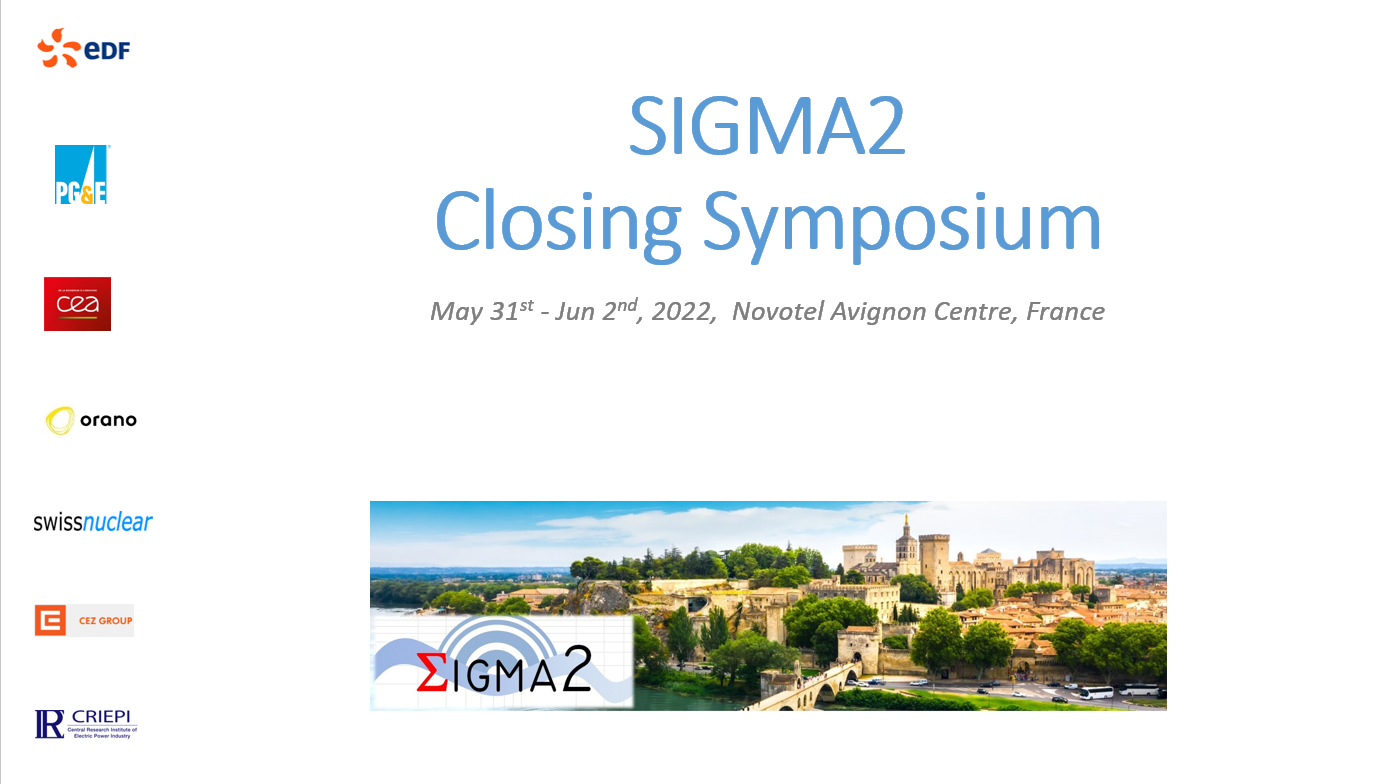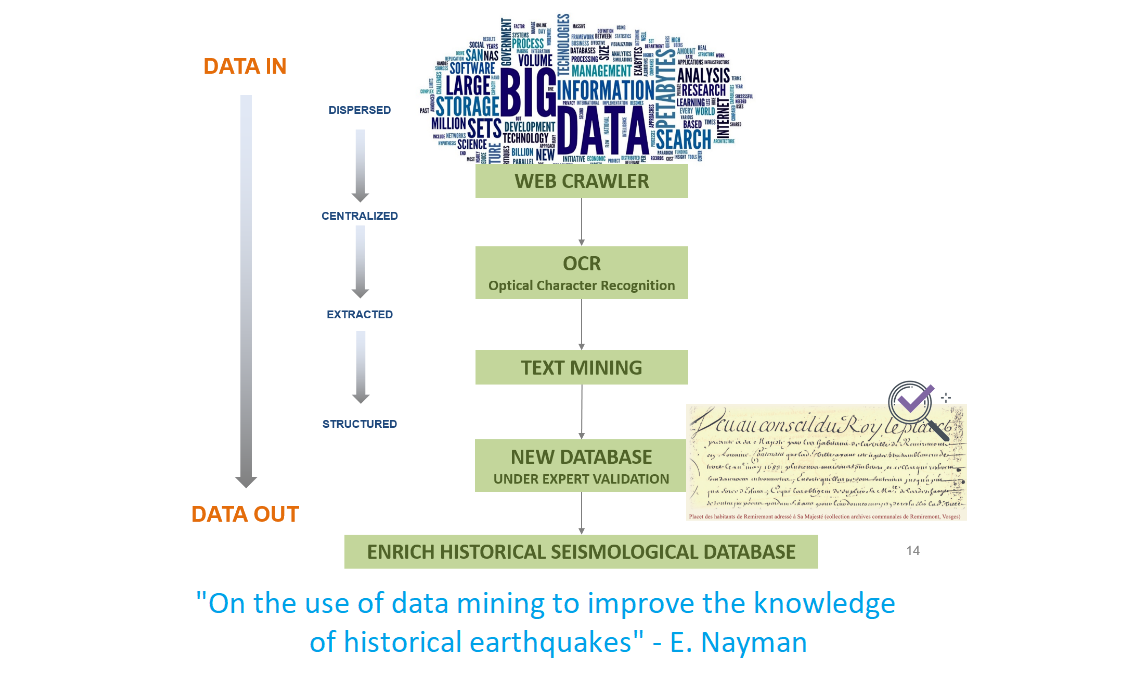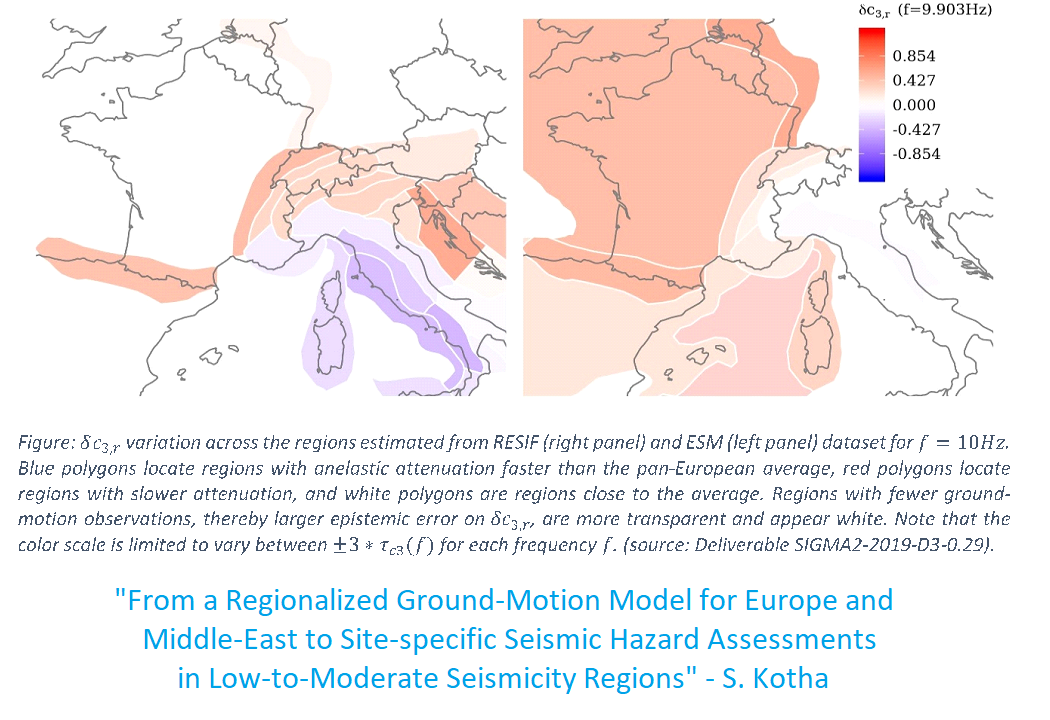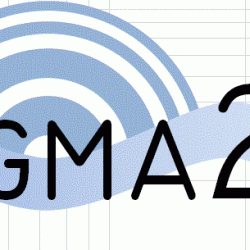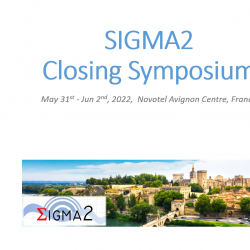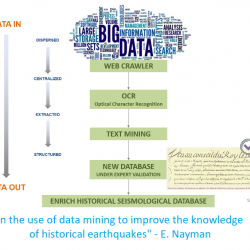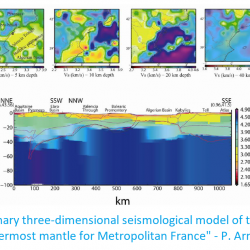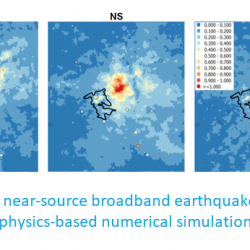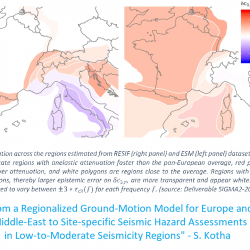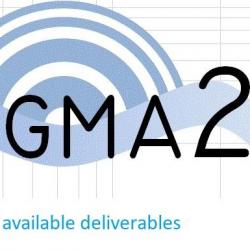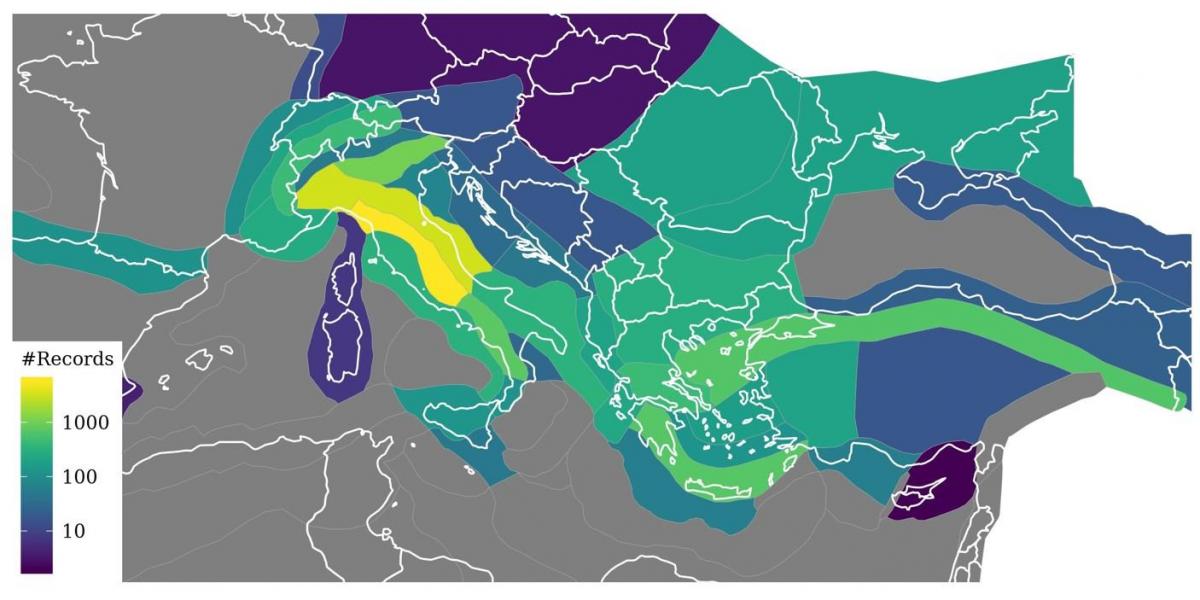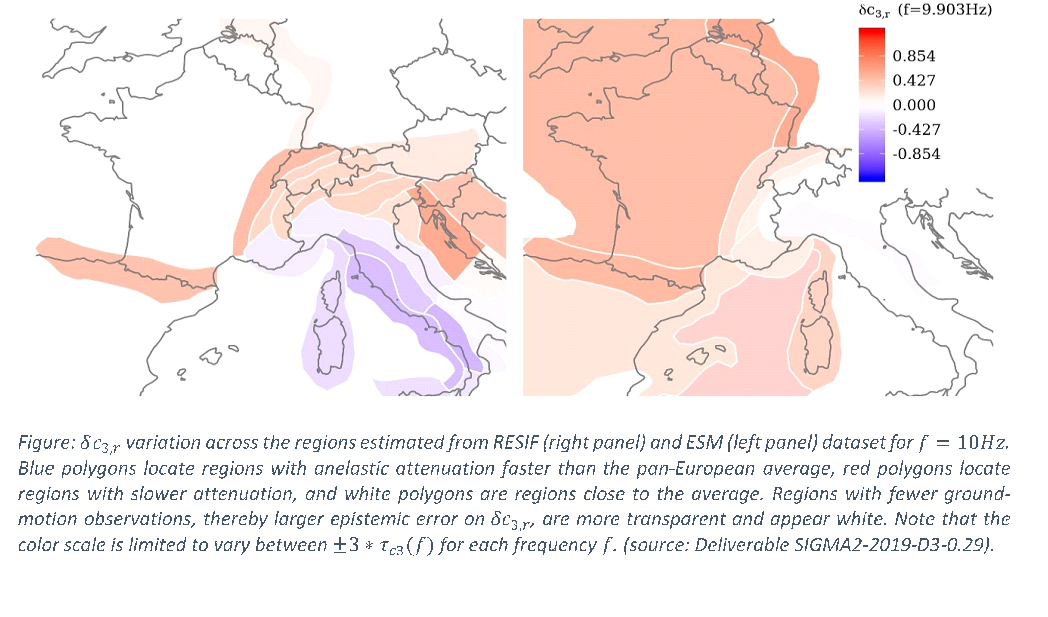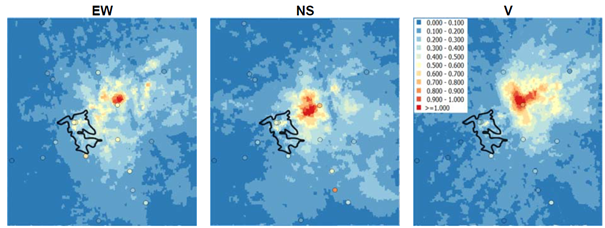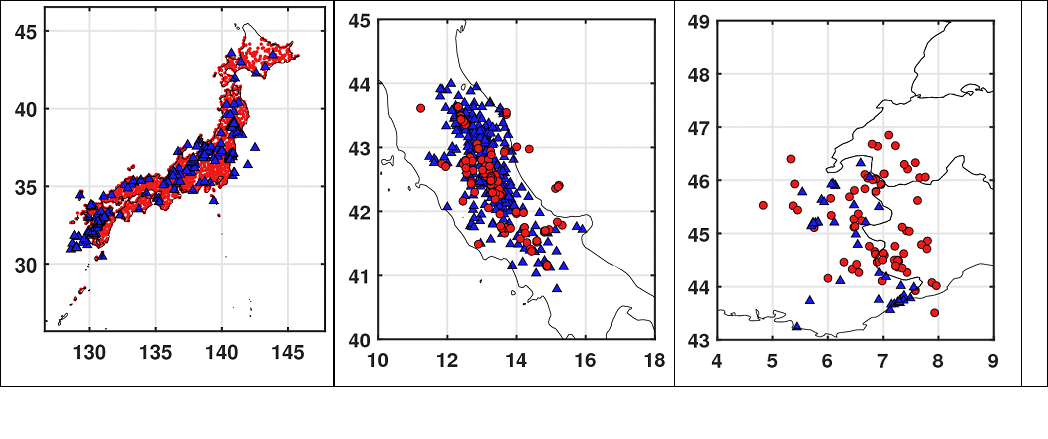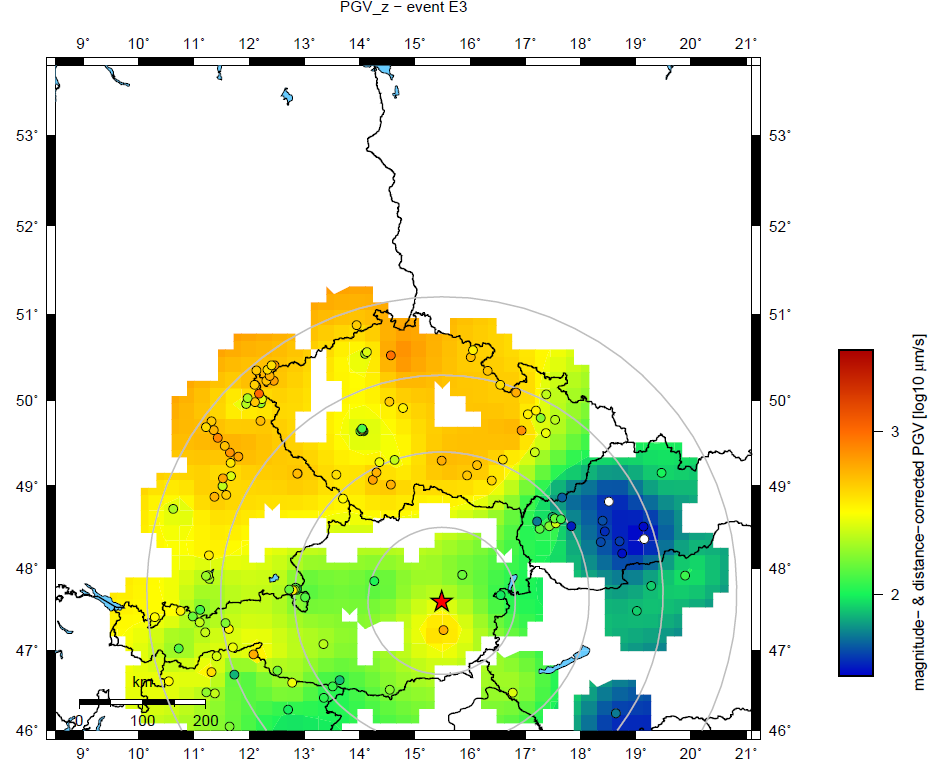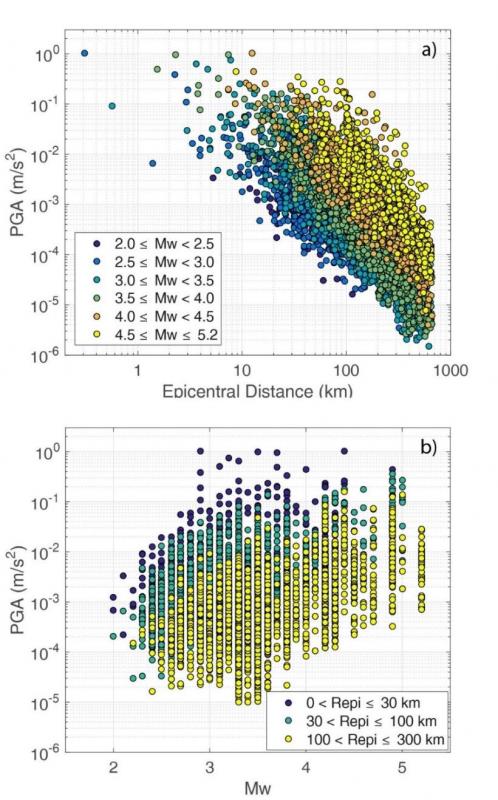Ground Motion
Motivation & Objectives
The uncertainties affecting ground motion models remain the highest source of uncertainty in the results of seismic hazard studies.
Despite the progress already done, it is important to obtain a prediction of ground motion adapted to rock conditions (as an input for site response simulation), and adapted to various types of sites.
The main scope of WP3 is to improve the understanding and description of ground motion, in order to provide a more realistic assessment of seismic motion for seismic hazard assessment.
The work axes include:
- Improving empirical ground motion estimates for both generic and site-specific hazard assessment studies
- Improving the quantification and the physical understanding behind seismic wave attenuation
- Ground Motion in low seismicity regions
- Ground Motion modeling through simulations
Coordination
Paola TRAVERSA (EDF) and Philippe RENAULT (SwissNuclear)
Actions
Ground Motion High frequency attenuation proxy (“Kappa project”)
- In site-specific seismic hazard assessment studies, the soft-rock ground-motion predictions from existing ground motion models are commonly adapted for hard-rock site conditions using the “kappa” scaling. This model has been the standard approach for computing hard-rock ground motions for the last 20 years in the central and eastern US (CEUS), and has recently become the standard practice in Europe and other regions of the world as well. This approach leads to a large increase in the high frequency (> 10 Hz) ground motions as compared to soft-rock (“standard” rock) ground motions, e.g. in the western US (WUS), Italy, Turkey.
- An initial evaluation performed on empirical data indicates a weaker dependence on kappa than found using the standard approach (Kishida, et al, 2016; Ktenidou & Abrahamson, 2016). This result, however, requires further evaluation to make sure that it is robust and is not the result of trade-offs with other parameters in the data sets.
- The amount of available ground motion data on hard-rock sites has greatly expanded worldwide during the last years. However, the dependence of the high-frequency ground motion on kappa has not yet explicitly been addressed.
Funding member: EDF
Type: Scientific Partnership (4 years).
Collaboration: University of California - Berkeley, EDF.
Status: In progress (start date: 2017).
Ground motion for hard rock condition at depth
In the framework of site-specific ground motion assessment, one of the major challenges consists in determining the seismic bedrock ground motion (reference ground motion) to be used as input for site response analyses. Before the beginning of SIGMA2, with the exception of a prototype model developed using Japanese ground motion (Laurendeau et al., 2017), no ground motion model was suitable for use in estimating reference ground motion at hard rock horizons, particularly in low seismicity regions.
Program of research
The aim of this work is to develop ground motion models specifically referred to hard rock horizons, obtained using “corrected” ground motions. Ground motion recorded at the surface at stiff soils and rock sites is corrected from its site response in order to obtain reference hard rock ground motion. Site response with respect to the reference condition is evaluated both, by 1D simulations and by Generalized Inversion Techniques (GIT) of Ground Motion.
Funding member: CEA
Type: PhD
Collaboration: CEA-Isterre, Université de Grenoble
Status: in progress
Reference rock ground motion
Methodology to identify reference rock sites (report available)
Ground motion model for reference rock sites (on-going)
The aim of this work is to improve the strategy for reference rock sites identification and for reference ground motion prediction. To assess site-specific ground-motion, it is common practice to calculate seismic hazard at bedrock and then apply a deterministic site-specific amplification factor, computed using 1D/2D numerical site response analyses. For this reason, the ground motion at bedrock should be free from amplification phenomena and its site response flat. This can then be considered “reference rock motion”. Ground Motion Models (GMMs) are generally calibrated using records at stations classified as rock that, however, can be affected by site-effects. The assumption currently made that GMM based rock site predictions are unaffected by amplification phenomena may cause inaccurate prediction of the expected motion when the hazard is evaluated including site effects, due to the amplified response of rock motion.
To address this issue, following Felicetta et al. (2018), we propose a strategy for the identification of reference rock sites based on seven proxies, inferred from geophysical and geological data and from seismological analysis.
The deliverable is developed as follows:
2. Given the large number of stations included in the training dataset, a preselection to identify candidate stations to be references-rock sites is performed. These stations are selected executing a residual analysis with respect to ITA10 (Bindi et al., 2011) predictions for generic rock (EC8-A) and estimating the horizontal site-to-site term (δS2S) and the associated variability. Since these terms quantify the systematic amplification/deamplification of the observed ground motion at a given station, we consider as possible reference sites only those having the site-to-site terms close or lower than zero;
In addition to the horizontal site-to-site term (δS2S-H), additional indicators, that may affect the seismic response of a site, are selected as proxies:
- Housing (HOU)
- Topography (TOP)
- Average shear wave velocity in the first 30 m (VS,30);
- Surface geology from cartography (GEO);
- Resonant frequency and shape of the curve obtained from H/V of Fourier spectra of noise records (HVNSR) or from H/V of coda or S-waves of earthquake records (HVSR-C or HVSR-S);
- Resonant frequency and shape of the curve obtained from H/V of acceleration response spectra (HVRS);
- With the aim of handling the relevance, the data quality and the lack of these indicators, a weighting scheme is also introduced to award a score to each proxy and establish a ranking of the candidate reference rock stations.
Funding member: EDF, ORANO
Type: Post-doc (2,5 years)
Collaboration: INGV-Milan (Italy), EDF (France)
Status: In progress (starting date : June 2018)
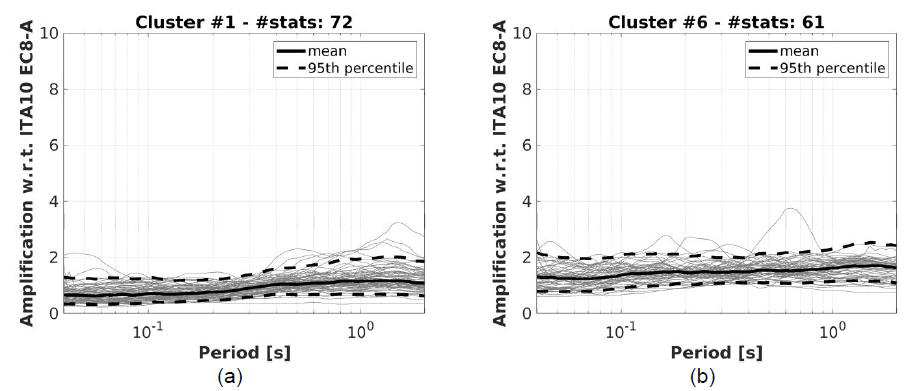
Derivation of European GMPEs based on new/different intensity measures
Program of research
The aim of this task is to benefit from the recent improvement and extension of ground motion datasets in Europe (ESM, Lanzano et al., 2019) and in low seismicity areas such as France (Task 3.5.1, Traversa et al., 2020) to develop updated GMPE for a set of complementary Intensity Measures (IM, such as Response Spectral Acceleration, Fourier Spectral Acceleration, Arias Intensity, Significant Duration, C.A.V., PGV etc). Correlations among IM will also be provided.
Organization
Funding member EDF
Type: Internship
Collaboration: EDF, Université de Strasbourg
Status: completed
From a Regionalized Ground-Motion Model for Europe and Middle-East to Site-specific Seismic Hazard Assessments in Low-to-Moderate Seismicity Regions
Report available! ![]() "From a Regionalized Ground-Motion Model for Europe and Middle-East to Site-specific Seismic Hazard Assessments in Low-to-Moderate Seismicity Regions" by S. Kotha (6.89 Mo)
"From a Regionalized Ground-Motion Model for Europe and Middle-East to Site-specific Seismic Hazard Assessments in Low-to-Moderate Seismicity Regions" by S. Kotha (6.89 Mo)
Motivation
Typical seismic hazard assessments focus on predicting the ground-motion exceedance probabilities at reference rock site conditions. Following which, soil response analyses are carried out to convolve the estimated hazard on reference rock into the actual hazard levels at a site accounting also its site-specific soil conditions. Although such simulation based site-specific hazard assessments have been in practice for several years, recent increase in site-specific ground-motion data has raised questions on its completeness. For instance, simulation based site-specific hazard assessment relies primarily on the 1D soil profile at a site, while ignoring the more complex 2D/3D topographic effects that may dominate the observed ground-motions at the site. Considering the computational expense (and epistemic uncertainties) of simulating realistic ground-motions accounting the various complexities, a feasible approach to site-specific hazard assessment seemed to be through collecting site-specific ground-motion data. With the site-specific ground-motion data, it is relatively straight-forward to estimate empirical site-specific adjustments for use in ground-motion prediction and thereby, seismic hazard assessment.
In regions of high seismicity, it is relatively convenient to collect site-specific ground-motion data from frequent tectonic events and develop site-specific ground-motion prediction models. The challenge however has been the development of such models in low-moderate seismicity regions, e.g. France, where the time required to collect sufficient site-specific data makes it impractical. To address this limitation, the idea of exporting site-specific ground-motion models developed in high seismicity regions to low-moderate seismicity regions has been pursued. However, the procedure proved to be more complex than anticipated due to the non-negligibly large regional differences in ground-motion observations. Therefore, a critical intermediate step has become the quantification of regional differences in observed ground-motions, prior to the quantification site-to-site differences within a region.
Program of research
In this report, we discuss the progress towards site-specific ground-motion predictions in low-moderate seismicity regions. The analyses are performed on ground-motion observations reported as both response spectra and Fourier spectra. The process begins with developing new ground-motion prediction models for the high seismicity regions of Europe and Middle-Eastern regions. Given the tremendous differences in tectonics and geology across pan-Europe, it has become essential to quantify and evaluate the regional differences in the ground-motion. Quantification of regional differences is done via robust linear mixed-effects analyses of the ground-motion data. Evaluation involved asserting physical meaning to the quantified regional differences, and wherever possible, identifying new explanatory parameters capable of connecting high and low-moderate seismicity regions in terms of ground-motion characteristics. With this in hand, exporting region-specific ground-motion prediction models from high seismicity regions to low-moderate seismicity regions becomes conceivable. However, lack of suitable site-response proxies that can explain the observed site-to-site differences within a region has been impeding the process of exporting site-specific ground-motion prediction models to low-seismicity regions. In lieu of extensive site-response parametrization, we demonstrate the procedure of estimating region- and site-specific adjustments to France, where fortunately a new ground-motion dataset has become recently available.
Organization
Funding member: EDF
Type: Post-Doc
Collaboration: GFZ Potsdam
Status: completed
Physics-based simulations & application to case studies
Reports available!
![]() "Progress report on 3D physics-based numerical approaches for earthquake ground motion prediction" by R. Paolucci et al (5.19 Mo)
"Progress report on 3D physics-based numerical approaches for earthquake ground motion prediction" by R. Paolucci et al (5.19 Mo)
![]() "Construction of a near-source broadband earthquake ground motion dataset from 3D physics-based numerical simulations" by R. Paolucci (13.09 Mo)
"Construction of a near-source broadband earthquake ground motion dataset from 3D physics-based numerical simulations" by R. Paolucci (13.09 Mo)
Program of research
The objectives of these tasks are manifold and cover: 1/ the development of novel approaches for earthquake ground motion prediction by physics-based numerical modeling, including the implementation of a novel dynamic rupture model and the development of an innovative strategy to generate broadband ground motions using artificial neural networks; 2/ the application of such approaches to the simulation of real case studies, as the 2016 Mw 6.5 Norcia earthquake and the 2019 Mw 4.9 Montélimar earthquake in France; 3/ the characterization of near source ground motion by constructing a synthetic dataset of broadband physics-based ground motions and the development of a hybrid near-source GMPE using both synthetics and recordings; 4/ the assessment of fragility curves for selected Nuclear Power Plant components for the specifically developed near-source ground motion.
Funding member: Swissnuclear
Type: Contract
Collaboration: Politecnico di Milano
Status: finalized
Generalized Inversions Techniques of ground motion (GIT) benchmarking (“GITEC project”)
- Generalized inversion techniques (GIT) have become popular techniques for determining ground motion parameters, particularly in low-to-moderate seismicity regions. Indeed, it has been shown that GIT can potentially provide reliable site response estimates, even at sites where few recordings are available, as well as valuable information about source features and regional attenuation characteristics.
- Recent advances have been made in GIT, different approaches and alternative basic hypothesis are followed by different research groups, such as the application of “non-parametric” and “parametric” inversion schemes. In this context, some scientific questions rise: depending on the final scope of GIT, what can be the optimal dataset configuration and the best inversion strategy? What is the impact of the different assumptions and implementations on the reliability of the results? What is the dependence of the results on the chosen reference conditions? How to quantify epistemic uncertainties?
The aim of this research task is to better understand how to use the GIT schemes in different applications. The objective will be fulfilled by performing a methodological benchmark of different generalized spectral inversion methods and dataset configurations. The benchmark will be run as a project open to worldwide volunteer teams: the GITEC (Generalized Inversion TEchniques Comparisons) project.
The participating groups will perform GIT on all the provided datasets following different strategies and hypothesis. The results will be shared and discussed during workshops, at the end of which conclusions and recommendations will be drawn.
Datasets:
One relatively dense national dataset from Japan;
A very dense local dataset from central Italy;
A sparse dataset from France.
Funding member: CEA, EDF
Type: Benchmark project based on volunteer basis (1 year)
Collaboration: Organizing team composed of GFZ, ISTerre, CEA, EDF and participant teams worldwide
Status: completed
Azimuth-dependent attenuation of seismic waves in Central Europe
The main goal is to describe azimuthal dependence of attenuation of seismic waves in the Bohemian Massif and its vicinity (Central Europe). Macroseismic studies of various historical earthquakes with epicenters in the Central Europe region have shown a significant elongation of isoseismal lines in some directions (Zátopek, 1948). Recently, this phenomenon was confirmed on the basis of instrumental records of two moderate-size earthquakes in the Vienna Basin (Málek et al., 2017). It has been found that the peak ground velocity amplitudes (PGV) and peak ground acceleration amplitudes (PGA) at comparable epicentral distances but different azimuths may vary by as much as one order of magnitude. An inspection of the individual seismograms suggests that the phenomenon is associated mainly with the propagation of high-frequency S waves. Significant differences in frequency content of the seismic waves radiated to different azimuths are also demonstrated.
Within the scope of SIGMA-2, we have investigated the azimuthal dependence for several moderate-size earthquakes in Central Europe with moment magnitudes between 2.3 and 3.8. We selected 9?earthquakes from 7 seismic epicentral zones from the years 2012 to 2018, which represent the strongest events in those zones for the last decade. The number of seismic stations in the region under investigation has been increasing (both permanent and temporary). It enables us to observe the attenuation of seismic waves directly from the measured seismograms. The results show that the PGV and PGA depends strongly on the azimuth of wave propagation for some earthquakes. The azimuthal dependence has not been considered yet in the evaluation of seismic hazard for the Temelín and Dukovany nuclear power plants which are situated in the Bohemian Massif.
Organization
Funding member: CEZ
Collaboration: University of Prague
Status: finalized
Estimation and mapping of the intrinsic component of seismic wave attenuation in Europe as a complement of the absorption component.
Funding member: EDF
Type: Post-Doc
Collaboration: IRAP Toulouse
Status: in progress (NB: delayed due to Covid-19 situation)
Implementation of a high standard ground motion dataset for metropolitan France (RESIF dataset)
Link to the RESORCE database: https://www.resorce-portal.eu/
This new dataset, called the RESIF dataset includes more than 6500 quality-checked records from 468 earthquakes recorded at 379 stations. It is complete down to magnitude ML 3.5 over the whole French territory and less (about ML 2.5) in the Eastern part. Magnitudes range from ML 2.4 to 5.6 and from Mw 2.0 to 5.2, while distances range from less than 1 to 600 km. Given the occurrence of major earthquakes during 2019, this dataset will be extended up to the end of 2019.
Organization
Funding member: EDF
Type: Contract
Collaboration: EDF, CEA, ISTerre, Fugro
Status: completed (dataset 1996-2016), in progress (dataset 2016-2019)
Simulation Techniques benchmark, the test case of the November 11, 2019 Mw4.9 Le Teil earthquake
Report available! "Simulation Techniques benchmark, the test case of the November 11, 2019 Mw4.9 Le Teil earthquake" by E. El Haber et al (11.93 Mo)
Program of research
The objective of this task is to implement empirical (and/or stochastic) simulations of ground motion and in particular the Irikura recipe currently used in Japan and to apply this approach for the simulation of the 2019 Mw 4.9 Montélimar earthquake. Advantages and drawbacks of this approach with respect to the physics-based simulation approaches developed in task 3.3.2 will be evaluated in the framework of a benchmark focusing on the simulation of the 2019 Montélimar earthquake.
Organization
Funding member: SwissNuclear
Type: in-kind
Collaboration: EDF, Politecnico di Milano
Status: in progress

